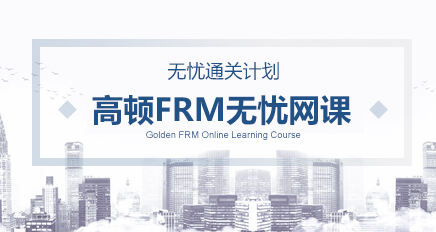USCPA考试中Audting课程
USCPA考试中,Audting是一门比较困难的课程,这门课程的困难在于它与业务实务有非常大的联系!我们不仅仅要理解理论,更要对业务实务有比较深入的认识,同时又要处于相对较高的视野来看待我们的业务实务。最近PCAOB又颁布新的审计准则AU16,帮助审计公司建立与客户审计委员会的有效沟通机制!详细情况请参考USCPA网站原文:
A new auditing standard approved unanimously Wednesday by the PCAOB is designed to encourage two-way, effective communication between external auditors and audit committees during public company audits.
With the aim of improving audit quality, the PCAOB approved Auditing Standard (AS) No. 16,Communications With Audit Committees, and amendments to other PCAOB standards. AS 16 describes interactions a public company auditor will be required to have with the audit committee.
AS 16 supersedes AU Sec. 310, Appointment of the Independent Auditor, and AU Sec. 380,Communication With Audit Committees. AU Sec. 380 referred to communication between auditors and audit committees as incidental to the audit. The new standard makes it clear that communication is essential to a high-quality audit.
The PCAOB has no jurisdiction over audit committees, so the standard’s requirements are aimed strictly at external auditors. The new standard requires auditors to:
Establish the understanding of the terms of the audit engagement with the audit committee. The terms of the engagement must be recorded in an engagement letter. Previously, AU Sec. 310 had required the understanding to be established with company management rather than the audit committee.
Provide audit committees with an overview of the overall audit strategy, including the timing of the audit, significant risks the auditor identified, and significant changes to the planned audit strategy or risks.
Provide information about others involved in the audit, including internal auditors or other independent public accounting firms.
Give information regarding the company’s accounting policies, practices, estimates, and significant unusual transactions.
Provide an evaluation of the quality of the company’s financial reporting, including conclusions regarding critical accounting estimates and the company’s financial statement presentation; difficult or contentious matters for which the auditor consulted outside the engagement team; the auditor’s evaluation of the company’s ability to continue as a going concern; and difficulties encountered in performing the audit.
As with all PCAOB standards, AS 16 must be approved by the SEC. The SEC also must determine whether the standard should apply to emerging growth companies as defined by the Jumpstart Our Business Startups (JOBS) Act of 2012, P.L. 112-106; the PCAOB recommended that such companies be required to apply the standard.
If approved by the SEC, the standard would be effective for public company audits of fiscal periods beginning after Dec. 15, 2012.
PCAOB Chairman James Doty said the standard appropriately describes best practices that the PCAOB has learned from experience and advice.
“I believe the standard moves the auditor’s communication with the audit committee away from compliance checklists, decisively in the direction of meaningful, effective interchange,” Doty said during a public meeting. “We have taken care to avoid miring both the auditor and the audit committee in minutiae.”
Cindy Fornelli, executive director of the Center for Audit Quality (CAQ), which is affiliated with the USCPA, said effective and engaged audit committees, through their oversight of the external auditor, play a critical role in serving the interests of investors and establishing good corporate governance.
“The CAQ supports efforts to enhance the effectiveness of audit committees, including two-way communications with the external auditor, to further assist audit committees in fulfilling their statutory responsibilities on behalf of investors,” Fornelli said.
Cathy Lego, independent audit committee chair of California-based tech companies SanDisk Corp. and Lam Research Corp., said the communication required by the standard already is taking place in many cases. She said audit committees started having such communication with auditors years ago, and added that good, honest communication helps build trust between the audit committee and the external auditor.
“The more there’s the trust, the earlier you see something that could be a problem, and that’s what you want,” Lego said. “You don’t want to wait until there’s required communication.”
The PCAOB has been developing the standard for more than two years. It was proposed March 29, 2010, and reproposed Dec. 20, 2011, after the PCAOB received feedback from stakeholders.
In crafting AS 16, the PCAOB sought to:
Develop a standard that’s scalable to the size and complexity of a company, so less communication would be required of auditors of smaller, less complex companies.
Retain existing communication requirements.
Focus communication on significant matters.
Incorporate communication requirements imposed by the Sarbanes-Oxley Act of 2002 and related SEC rules.
Link new communications requirements to related performance requirements in PCAOB standards.
List other PCAOB standards and rules that require audit committee communications so that the communication requirements in other standards can be easily accessed in one place.
Provide the auditor with the ability to communicate orally or in writing. Oral communications must be documented by the auditor, however.
Recognize that management as well as the auditor may discuss issues related to the company’s financial statements with the audit committee, and that it would not be cost-effective or practical for the audit committee to receive the same information twice if the auditor knows management has already communicated the information.

相关阅读
USCPA与ACCA的主要区别2011/06/14
USCPA大门向非审计专业人士开放2011/06/14
2011年第一季度USCPA考试通过率2011/06/14

















